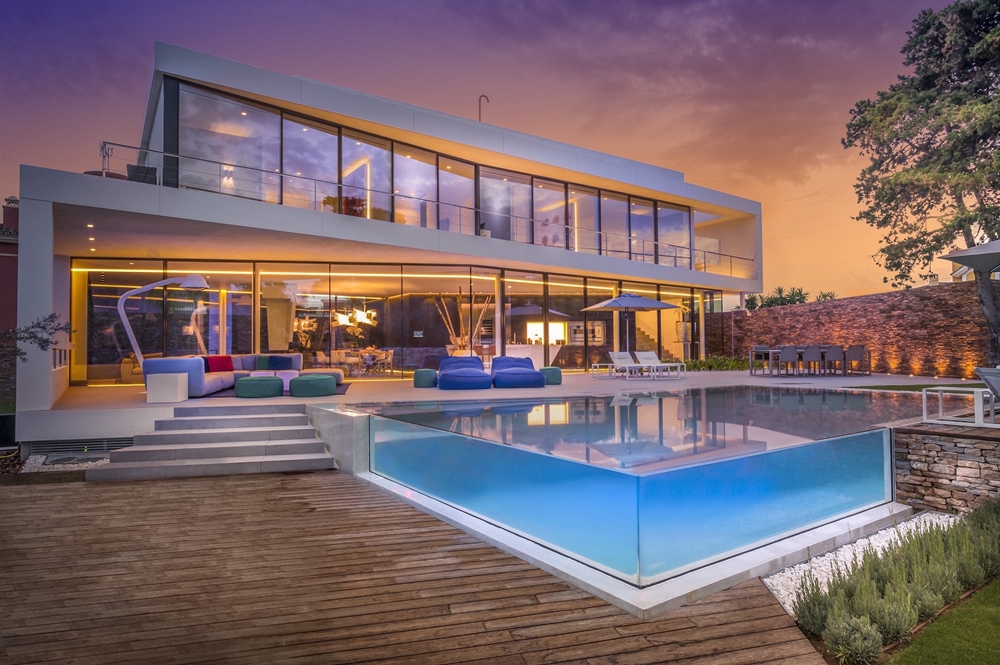Longing to be connected to nature is common for people, especially in urbanized areas. It’s an urge deeply rooted within us, despite the separation we’ve created between the built environment and the natural world. Biophilic design (a concept gaining traction in the architectural world) seeks to bridge this gap, enhancing our wellbeing in the process.
Understanding Biophilic Design
At its core, biophilic design revolves around integrating nature into the spaces we inhabit. While it is sometimes simplified to just adding a few potted plants or incorporating wood accents, it can be so much more than that. At its core, this type of design takes a holistic approach toward mimicking patterns found in nature. By looking at natural processes and elements, designers can create environments that both nurture and inspire the people who live and work in them.
Elements of Biophilic Design
- Natural Light: Harnessing sunlight to illuminate interiors not only reduces energy consumption but also uplifts mood and productivity.
- Greenery: Introducing living plants into indoor spaces enhances air quality, reduces stress, and fosters a sense of connection with nature.
- Natural Materials: Incorporating materials like wood, stone, and water evokes the textures and elements found in the natural world, grounding occupants in a sense of place.
- Views of Nature: Access to outdoor views, whether through windows or open spaces, provides visual relief and stimulates cognitive function.
- Natural Shapes and Forms: Embracing organic shapes and biomorphic patterns in design elements evokes a sense of harmony and tranquility.
The Impact of Natural Color Temperatures and CRI
When it comes to outdoor area lighting, the importance of natural color temperatures and Color Rendering Index (CRI) cannot be overstated. These factors play a crucial role when creating environments that feel inviting and comfortable to be in.
Explaining Natural Color Temperatures:
Natural light varies throughout the day, shifting from cool blues in the early morning to warm yellows in the evening. Designing outdoor spaces with lighting fixtures that mimic this natural progression can help regulate circadian rhythms, promote relaxation, and enhance visual comfort.
Color Rendering Index (CRI):
CRI measures the ability of a light source to accurately render the true colors of objects compared to natural light. In outdoor areas, high CRI lighting ensures that the vibrant hues of flora, fauna, and architectural elements are showcased authentically, enriching the sensory experience of the space.
The Amazon Spheres: A Biophilic Oasis in an Urban Landscape
Integration of Nature:
The Amazon Spheres of Seattle, Washington are not just office spaces; they are living, breathing ecosystems. The three interconnected domes house over 40,000 plants from around the world, ranging from towering trees to lush ferns and cascading vines. This abundance of greenery creates a verdant oasis in the heart of the city, providing employees with a direct connection to nature amidst the urban hustle and bustle.
Natural Light & Views:
Designed to maximize natural light, the glass facades of the Seattle Spheres allow ample sunlight to filter through, illuminating the interiors and nourishing the plants within. Large windows offer panoramic views of the surrounding cityscape, while strategically placed skylights bring the changing patterns of the sky into the space. This abundance of natural light and views of the outdoors create a sense of openness and connection with the surrounding environment.
Biophilic Elements:
In addition to the extensive plantings, the Spheres incorporate various biophilic elements to enhance well-being and productivity. Wooden walkways wind their way through the lush vegetation, evoking the feeling of walking through a tropical rainforest. Water features, including a central cascading waterfall, provide auditory and visual stimulation, further enriching the sensory experience of the space.
Employee Engagement & Wellness:
Beyond their aesthetic appeal, the Amazon Spheres are designed with the wellbeing of employees in mind. The lush greenery and natural light not only create a tranquil work environment but also contribute to improved air quality and overall health. Studies have shown that exposure to nature in the workplace can reduce stress, boost creativity, and increase productivity, making the Spheres not just a place to work, but a place to thrive.
Bringing Biophilic Design to Life
Incorporating biophilic principles into architectural projects requires a thoughtful and collaborative approach. Architects, designers, and landscape architects must work together to seamlessly integrate natural elements into the built environment, creating spaces that resonate with inhabitants on a deep level.
By embracing biophilic design, we can create more aesthetically pleasing and sustainable spaces that also prioritize the health of those who inhabit them. From reducing stress and enhancing creativity to fostering a deeper connection with the natural world, the benefits of biophilic design are far-reaching.
As we continue to evolve in our understanding of the symbiotic relationship between humans and nature, biophilic design stands as a testament to our innate desire to coexist harmoniously with the world around us. Let’s embrace this shift in architecture and design, one inspired by the beauty and resilience of the natural world.












